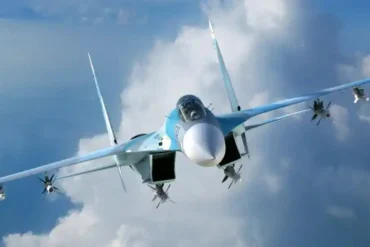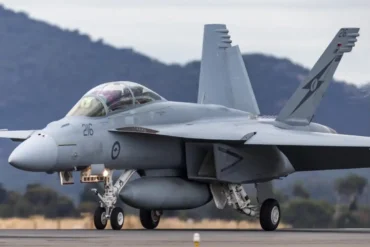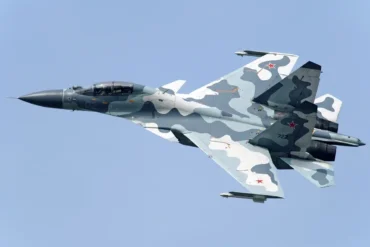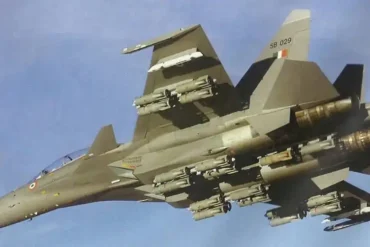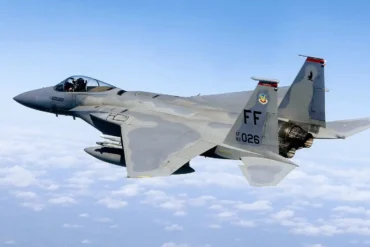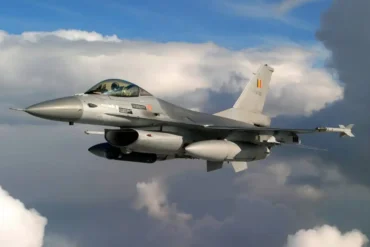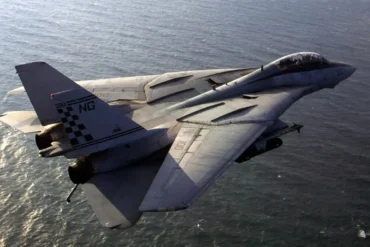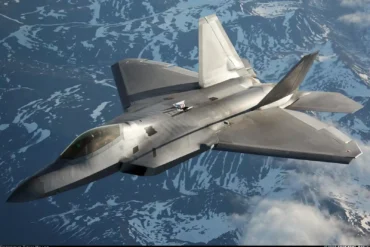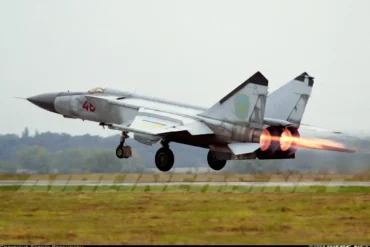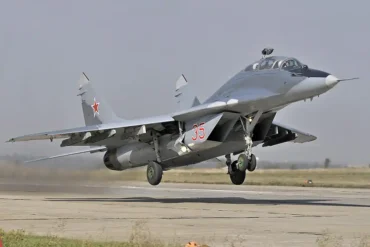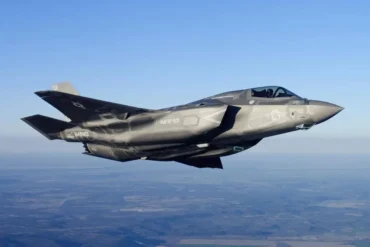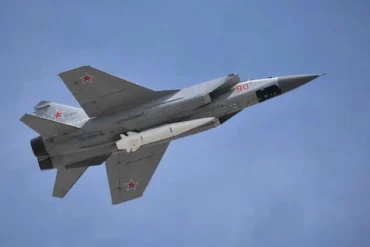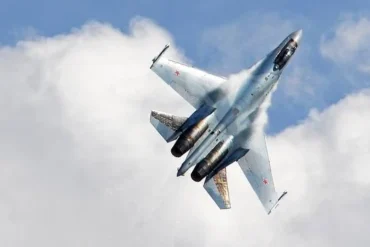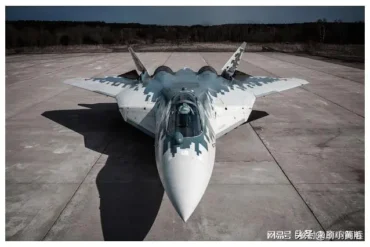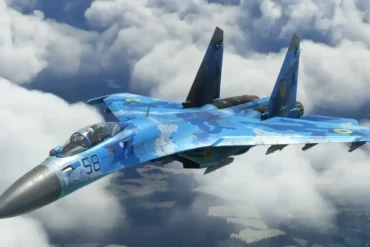The Sukhoi Su-30MKI stands as a marvel in the world of military aviation, blending cutting-edge technology with diverse international collaborations. As a cornerstone of India’s air combat capabilities, it represents not just a remarkable achievement in Russian and Indian defense technology, but also a testament to strategic foresight and adaptability. In this article, we delve into some of the most interesting and lesser-known facts about the Su-30MKI, from its advanced avionics to its unparalleled maneuverability.
Introduction to the Sukhoi Su-30MKI
The Sukhoi Su-30MKI, with its MKI designation standing for “Modernized, Export, Indian,” is a two-seat, multirole fighter developed specifically for the Indian Air Force (IAF). Developed by Russia’s Sukhoi Aviation Corporation, this aircraft is tailored to meet India’s unique defense requirements. Notably, it is one of the most versatile and combat-ready jets in the IAF’s arsenal, offering a combination of high-tech capabilities and strategic value.
Originally derived from the Russian Su-30, the Su-30MKI incorporates various design and performance modifications that cater specifically to the Indian defense landscape. With more than 270 units produced, it has become a mainstay in India’s air power, outpacing many of its contemporaries in the region.
Powerful Thrust Vectoring Technology
One of the most distinctive features of the Su-30MKI is its use of thrust vectoring engines, which provide the aircraft with exceptional maneuverability. The Su-30MKI is the first aircraft in the Sukhoi family to employ the AL-31FP thrust-vectoring engines, which allow the engine nozzles to deflect up to 15 degrees vertically. This gives the aircraft the ability to perform extraordinary maneuvers, such as the Cobra maneuver, which is nearly impossible for many other aircraft to replicate.
This super maneuverability makes the Su-30MKI an ideal choice for close-quarters combat, where the ability to outmaneuver opponents can be the difference between victory and defeat. The thrust vectoring engines, combined with the aircraft’s canard wings (or “duck wings”), enhance its agility, enabling it to perform complex aerial acrobatics that would otherwise be challenging for conventional fighter jets.
The “Cobra Maneuver” and More
The Cobra maneuver, or Pugachev’s Cobra, is one of the most iconic displays of an aircraft’s ability to defy conventional physics. The Su-30MKI, with its thrust-vectoring capabilities, can execute this maneuver with remarkable precision. By rapidly increasing the angle of attack, the aircraft can momentarily reduce its speed while staying in control, allowing it to evade missiles or other threats in a high-threat environment. This capability gives the Su-30MKI an unparalleled edge in dogfighting scenarios.
State-of-the-Art Radar System
Another defining feature of the Su-30MKI is its advanced radar system. The aircraft is equipped with the N011M Bars radar, an early example of Passive Electronically Scanned Array (PESA) radar technology. This radar is capable of tracking up to 15 air targets simultaneously and can engage up to four of them at the same time. This gives the Su-30MKI a distinct advantage in air-to-air combat, allowing it to target multiple threats while maintaining situational awareness.
Multirole Capability
In addition to its air superiority role, the Su-30MKI also has air-to-ground and air-to-sea capabilities, making it a highly versatile multirole fighter. The Bars radar facilitates both air-to-air and air-to-ground targeting, and its multimode detection capabilities extend to both land and sea targets. The aircraft’s ability to adapt to various combat scenarios—including strike missions and maritime patrols—cements its reputation as one of the most adaptable fighters in modern warfare.
International Collaboration: A True “Hybrid” Fighter
The Sukhoi Su-30MKI is often referred to as a “hybrid” fighter due to its integration of multiple international technologies. The aircraft benefits from collaborations with several nations, each contributing specialized expertise to its design and operation.
French Contributions: Avionics and Cockpit Design
France has played a crucial role in supplying key avionics and cockpit components for the Su-30MKI. Notably, the aircraft is equipped with LCD displays and a helmet-mounted sight system, both of which were provided by Thales, a French defense contractor. These features significantly enhance the pilot’s situational awareness, allowing them to identify and engage targets more effectively.
Israeli Contributions: Electronic Warfare Systems
Israel’s contribution to the Su-30MKI comes in the form of its electronic warfare (EW) systems. The aircraft is equipped with electronic countermeasure systems, including jammers and radar warning receivers, which enhance its ability to operate in highly contested environments. The integration of these systems allows the Su-30MKI to disrupt enemy radar and communications, making it more difficult for adversaries to track and target the aircraft.
Indian Innovations: Localized Modifications
India has also played a significant role in customizing the Su-30MKI to meet local operational needs. Indian engineers and defense scientists have worked closely with Russian counterparts to modify the aircraft’s mission computers and weapon integration systems. This collaboration has ensured that the Su-30MKI is equipped with the ability to deploy Indian-made weapons, such as the BrahMos missile, and operate in India’s unique environmental conditions, including extreme heat and high-altitude missions.
BrahMos Integration: A Global First
The integration of the BrahMos supersonic cruise missile into the Su-30MKI has elevated the aircraft’s strike capabilities to unprecedented levels. In 2017, the IAF successfully tested the BrahMos-A, a version of the missile designed specifically for air-launched operations. This integration allows the Su-30MKI to engage high-value maritime and land targets from long ranges.
The BrahMos missile, with its supersonic speed and advanced targeting systems, makes the Su-30MKI one of the few aircraft in the world capable of launching such a missile. This capability enhances India’s strategic reach, allowing the IAF to strike targets well beyond India’s borders, making the Su-30MKI a key asset in the country’s defense strategy.
Exceptional Performance in Extreme Conditions
The Su-30MKI is designed to operate in a wide range of environmental conditions, from the extreme heat and humidity of the Indian subcontinent to the high-altitude regions of the Himalayas. The aircraft’s systems have been specifically enhanced to withstand the challenges of tropical and mountainous climates, ensuring that it remains effective even in the harshest conditions.
Adaptation for High-Altitude Combat
One of the key areas of focus during the aircraft’s design was its performance in high-altitude regions, where oxygen levels are low and weather conditions are harsh. The Su-30MKI’s engines and avionics systems are specially tuned to function in these environments, allowing it to operate with full efficiency in the high-altitude regions of the Himalayas—a critical factor in India’s defense of its northern borders.
Air-to-Air Refueling: Extending Operational Reach
The air-to-air refueling capability of the Su-30MKI extends its operational range to well over 4,000 kilometers, allowing it to cover strategic regions across the Indian Ocean. The aircraft is equipped with an in-flight refueling probe, enabling it to refuel from tanker aircraft such as the IL-78. This capability dramatically enhances the Su-30MKI’s operational flexibility, allowing it to perform long-duration missions without the need to return to base.
A Controversial “Super Flanker”
Despite its many advanced features, the Su-30MKI has not been without controversy. German media has praised its performance, claiming that the aircraft’s overall capability surpasses that of contemporaries like the F-15E and Dassault Rafale. However, the operational record of the Su-30MKI has sparked debate, particularly concerning electronic systems reliability and maintenance issues. These concerns have led to discussions about the long-term performance and sustainability of the aircraft. Despite these challenges, the Su-30MKI’s overall combat effectiveness and contribution to India’s air defense capabilities remain highly significant.
Conclusion
The Sukhoi Su-30MKI is not just a fighter jet; it is a symbol of technological fusion, representing the collaboration of nations and the advancement of military aviation. From its thrust vectoring capabilities to its multirole functions, the Su-30MKI is a testament to the power of international cooperation and innovation. As it continues to evolve and serve as a cornerstone of India’s air power, it remains one of the most formidable aircraft in the skies. Whether engaging in dogfights or striking high-value targets, the Su-30MKI is truly a super flanker in India’s defense arsenal, combining speed, power, and precision to keep India’s skies safe.

